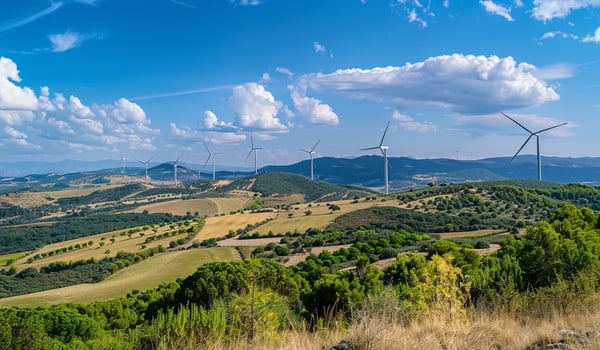China is preparing to tighten the rules for its national carbon market, signaling a pivotal change...
China’s ETS Could See 33-Fold Expansion by 2030
China’s national carbon market is poised for rapid expansion over the next decade, with its size projected to grow more than thirtyfold by 2030. A new report from the World Economic Forum (WEF), developed in partnership with Bain & Company, highlights the potential of the emissions trading system (ETS) to become one of the world’s most influential climate policy tools.
 An aerial view of China’s largest forest, the Greater Khingan, with endless coniferous trees stretching to the horizon. AI generated picture.
An aerial view of China’s largest forest, the Greater Khingan, with endless coniferous trees stretching to the horizon. AI generated picture.
According to the analysis, the market value of the ETS could reach between RMB 400–600 billion ($56–84 billion) by 2030. This would mark a steep increase from RMB 18.1 billion in traded value in 2024. ‘As coverage expands and prices rise, China’s ETS is on track to become a major tool for cutting emissions and driving innovation in low-carbon technologies by 2030’, the report noted.
The projection is built on several assumptions. The first is that emissions coverage will increase from 5.2 billion tonnes of CO2 equivalent (tCO2e) in 2024 to between 8.7 and 10.6 billion tCO2e by 2029. The system is also expected to transition from an intensity-based model to a cap-and-trade design by 2030. In addition, free allocation of allowances would begin to phase out after China reaches its emissions peak, falling by 5% each year.
These structural changes could see the price of China Emission Allowances (CEAs) rise to RMB 200–300/tCO2e by 2030. Currently, CEAs are trading at RMB 63.28/tCO2e on the Shanghai Environmental and Energy Exchange, their lowest level in two years.
Short-term market dynamics tell a different story. Analysts attribute today’s weaker prices to expectations of looser rules on surplus CEA carryovers, as well as a cautious rollout of new sectors this year. Lower electricity prices are also squeezing utilities, prompting some power producers to sell off allowances.
Despite these near-term challenges, the long-term trajectory points to significant growth. WEF estimates trading volumes could exceed 2 billion CEAs annually by 2030, compared with 189 million in 2024. The ETS already covers more emissions than any other carbon market worldwide and will expand further in 2025 when three additional industrial sectors—representing around 3 billion tCO2e—join the system.
If realised, these developments would position China’s ETS not only as a cornerstone of the country’s decarbonisation strategy but also as a pivotal force shaping global carbon market trends.






